August 8, 2024
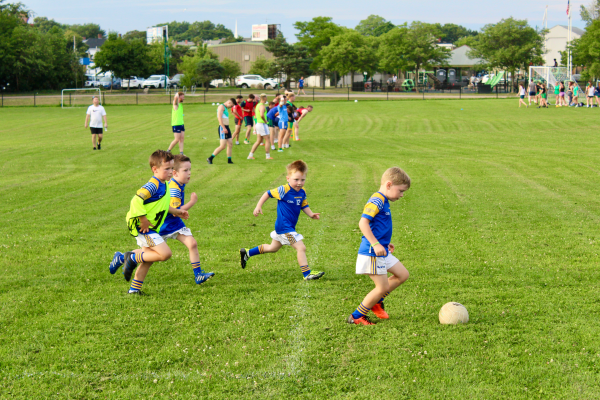
Youngsters in the St. Brendan’s Gaelic Athletic Club are seen at play during a recent afternoon practice session at Pope John Paul II Park in Neponset. Cassidy McNeeley photo
The St. Brendan’s Gaelic Athletic Club-Boston, founded in 2008, resembles a family – one big Irish family, that is.
The youth club offers both hurling and football, but most of the athletes prefer the latter. Gaelic football is an Irish team sport played between two teams of 15 players, including a goalkeeper, six backs, two midfielders, and six forwards.
During each 60-minute match, teammates work to score on the opposing goalkeeper by kicking or punching the ball into the other team’s net for three points, or between two upright posts above the net for one point.
Above, Dorchester Reporter video by Connor Nee/Connor Nee Media
Though the game is physical and competitive, the St. Brendan’s Club encourages children and teens in and around Boston to play and enjoy Gaelic games regardless of ability. More importantly, the club does this in an environment that prioritizes fun, friendship, personal growth, and lifelong participation.
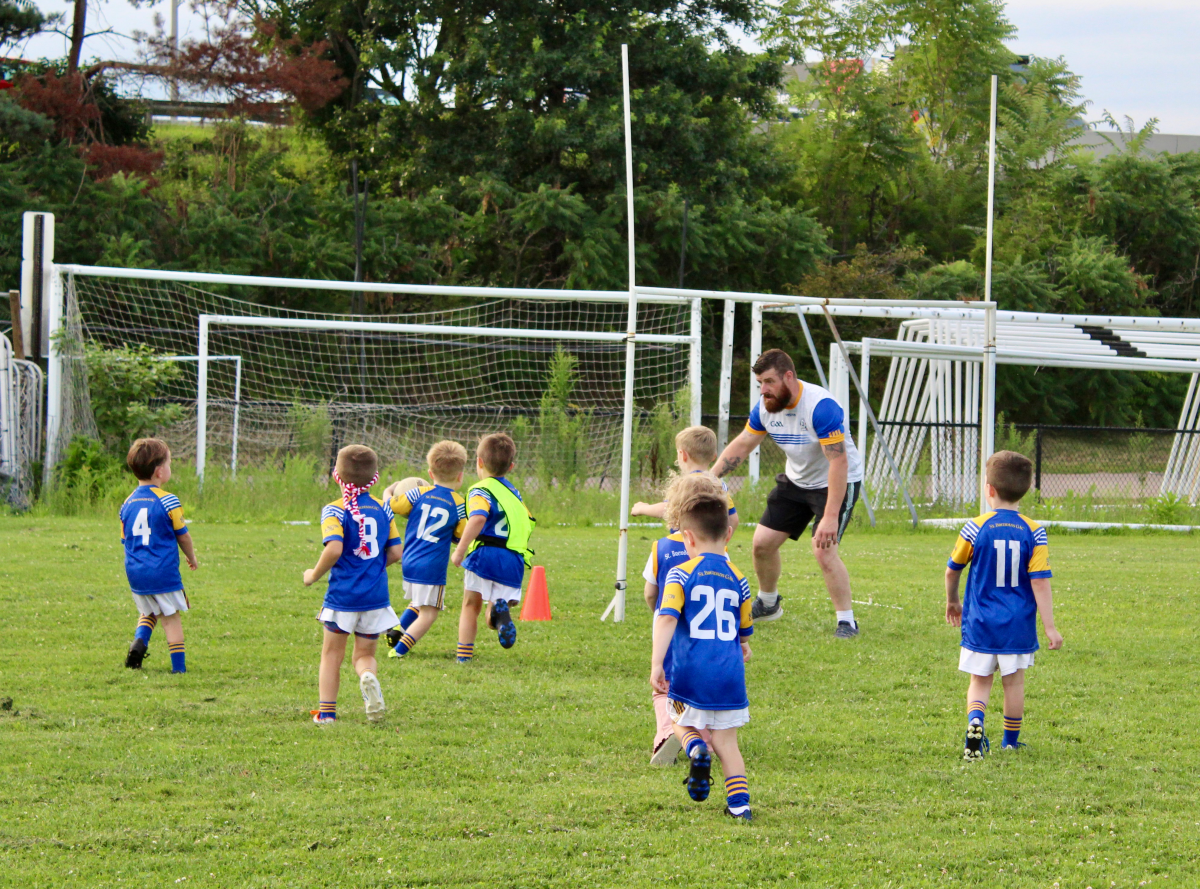
U6 players learning the ins and outs of the Gaelic football with coach Lee Stevens. Cassidy McNeeley photos
That’s why it has become a generational organization.
Chris McGillycuddy, one of the club’s longtime organizers, moved to Boston in 1986 when he was 25 years old. Having left behind his own amateur sports career in Ireland, he introduced his children to Gaelic football in the Irish Sports Youth League (ISYL) in Canton.
“I got involved with my son. He originally played at ISYL and then we founded St. Brendan’s because the travel from Dorchester was a lot with the afternoon traffic,” said McGillycuddy. “We went to St. Brendan’s church and got a blessing from the principal for the St. Brendan’s team and then we got this field secured and it moved along from there.”
It has been 16 years since Barry McCann and Frank Hogan started the club— with subsequent help McGillycuddy from and Richie Hanberry, and participation rates are higher than ever.
“We have about 180 kids registered this year from U6 through U18,” said club co-chair Brian McLaughlin. “The divisions are every two years. We have enough kids in some of the younger divisions to have two or three teams in each age group.”
Practices take place every Tuesday and Thursday at Pope John Paul II Park in Dorchester, beginning at 6 p.m. In the winter the teams move their practices indoors at the Union Point Sports Complex in Weymouth.
Like McGillycuddy, McLaughlin’s involvement in the organization stems from his children who now play in the U14, U12, and U10 divisions.
“Five or six years ago, all three of my kids played hockey and one of the other boys played Gaelic football and hurling at the club and they invited us down one Sunday afternoon,” McLaughlin recounted. “The kids really took to it; the coaches were great, the parents were great, other families were involved. It was a lot of fun.”
It only took the McLaughlins one practice to feel the sense of camaraderie that exists in the club. This same community has continued to be especially important for many Irish immigrants, including U12 co-ed football coach Jonathan Bryne.
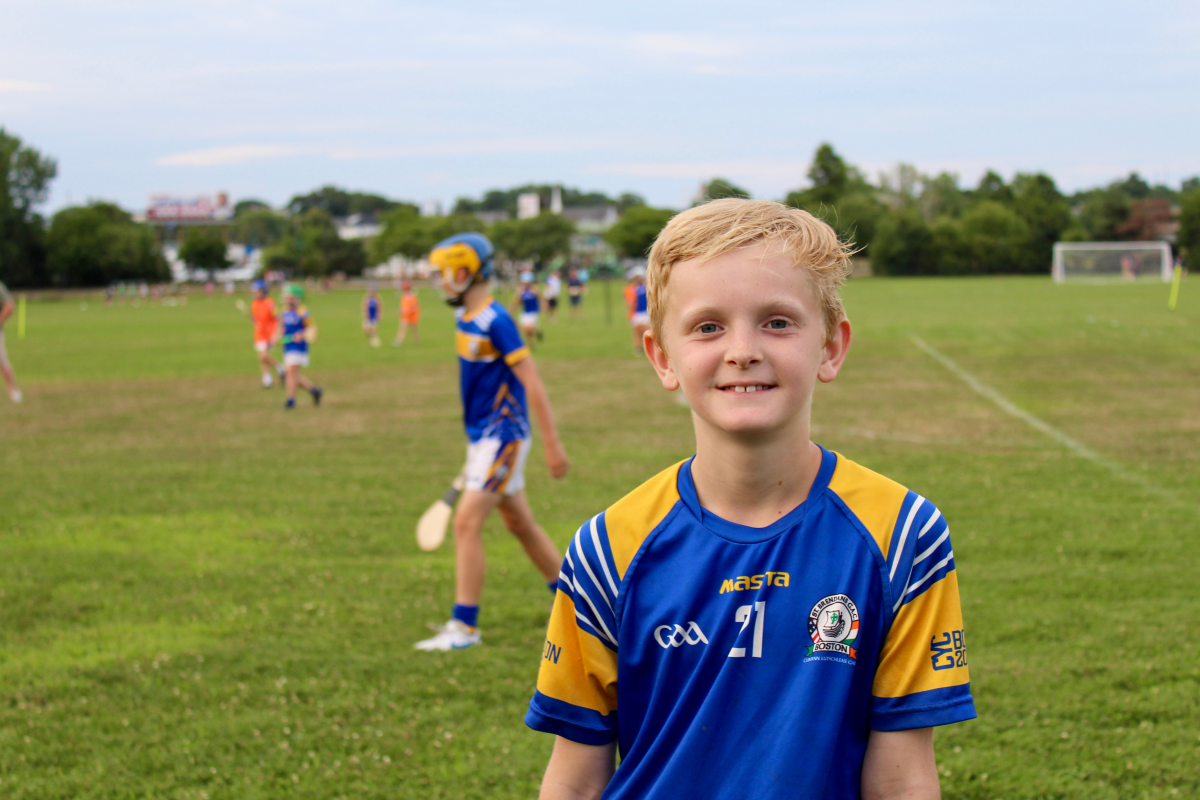
Brayden, 10, said “Hurling is fun because it’s a fast-moving sport and you get hurt sometimes but it’s part of the sport.”
“I always say when I moved to Boston it was home from home, you were immediately involved in a community, a lot of people with the same background,” said Bryne, originally from Donegal. “When I had kids, it was great we had a program to throw them in. It was nice to get involved and have them know a little bit about their Irish culture.”
Bryne, also the club treasurer, has three children who play for St. Brendan’s. This season he is coaching his son Noah, who plays halfback.
“Boston is a very diverse community, lots of different people with different backgrounds,” Bryne said. “I think it’s key to people’s identity that the Irish kids, whether they moved here, first generation, second generation, that they have something that kind of ties them back to what their Irish culture is.”
One player who was born in the US but formerly lived in Ireland is Noah’s teammate, Anna, who plays both Gaelic and hurling. “I moved here from Ireland six years ago,” she said, “and we found this club ‘cause it’s near where we live.”
Playing the Gaelic games connects Anna back to the community she formerly called home. Now, when her friends at school ask the 12-year-old what sports she plays, she jokes, “It’s an Irish thing; you wouldn’t get it.”
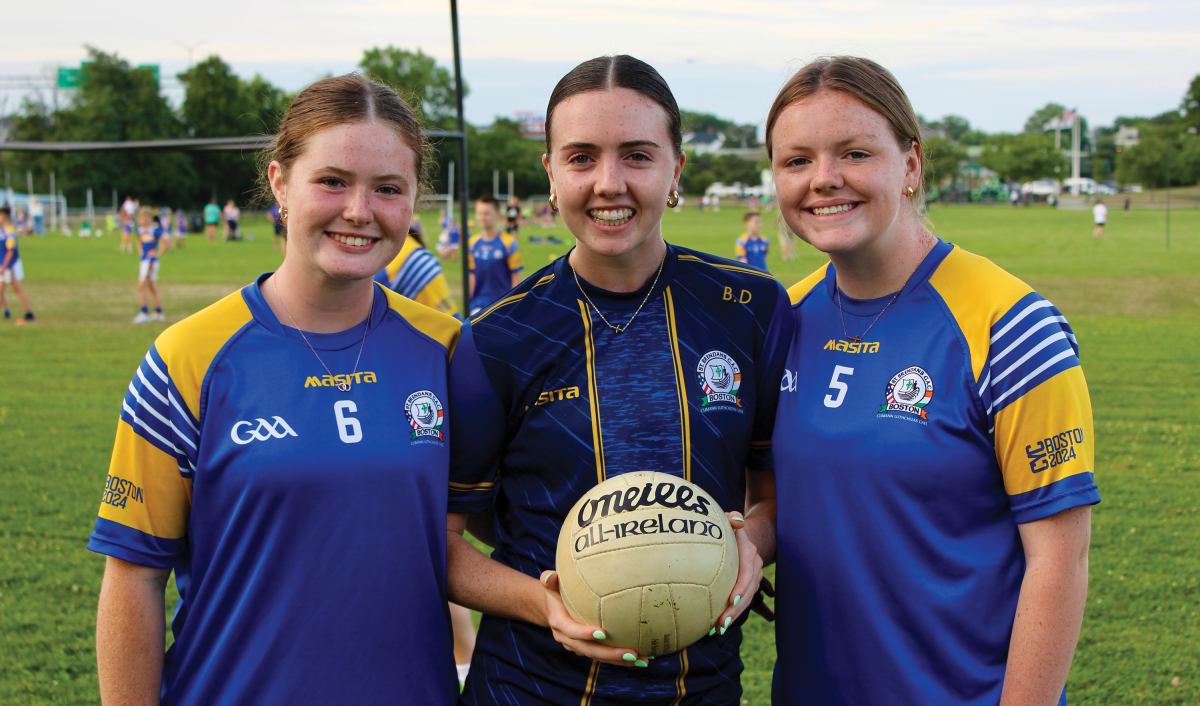
Ava (left), Bevan (center), and Caitlin (right) started with St. Brendan’s when they were just six years old. Over the last decade, they have paved the way for the club’s next generations of female athletes.
Although some kids at school might not “get it,” there are plenty of female players who came before Anna who could. This includes St. Brendan’s Junior Ladies players Bevan, Caitlin, and Ava. All three have grown within the club for the past ten years.
“We’ve been playing since we were six years old at the U6 level. The three of us were the original ones and then our team has expanded. So now we have a full girl’s junior ladies’ team which is amazing,” said Bevan, 17.
Caitlin added: “All of us have grown up together so it’s kind of like a sisterhood. We’re all like a family here anyway ‘cause everyone knows everyone. It’s a good community.”
After being with the program for more than a decade, the young women have not only become good athletes, but exceptional role models for younger girls like Anna.
“When we were younger. once you got to 18 there was nothing,” said Ava. “Even a lot of girls would stop playing at U14, U16 because there was nothing to work toward. But now that we have this team at the junior level, and eventually senior, the little girls will keep playing and work up the ranks.”
Bevan agreed. “Us continuing to play helps us build the program up. Now we have so much fun with the all-girls team. It helps boost the younger girls to see and try and reach us.”
Though Bevan, Ava, and Caitlin are kind, helpful leaders, as soon as the match begins, they become fierce competitors.
Since establishing their St. Brendan’s Junior Ladies team last year, the girls have dominated many major tournaments. They plan on continuing to do so for the rest of the summer, including when they travel to San Francisco at the end of this month to compete in the North American Finals.
Noted Junior Ladies’ coach Hudi Mc Kenna: “Everybody in this club now looks up to them girls, they’ve set themselves on a pedestal. They’ve won a lot of stuff. It’s not all about winning but it makes it easier for when kids see it to keep it going.”
Like the other coaches in the club, Mc Kenna once had a career of his own. He now hopes that as a coach he is passing down some of that knowledge. “It’s our national game and we want to keep it going as long as we can.” Mc Kenna told The Reporter. “It’s really good to give some of your knowledge down. I’ve learned from a lot of good coaches throughout the years and hope, please God, that the players will learn a little from me.”
As each coach shares elements of the game with the players, those players in turn pass down what they’ve learned to their younger siblings. Many players, including Bevan, Ava, and Caitlin, have brothers and sisters within the club, but the Boyce family seem to have the lead on having the most athletes on the field at one time.
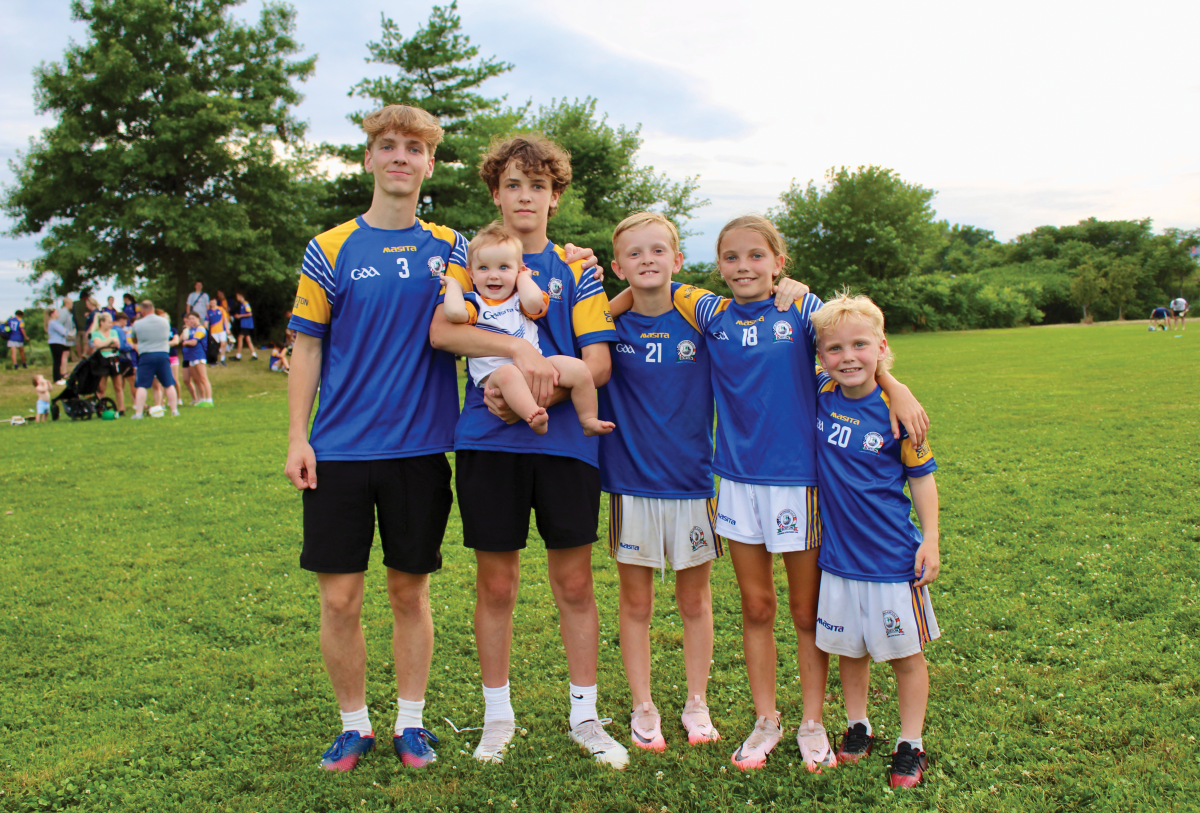
Five out of the six Boyce children already play for the St. Brendan’s Gaelic Athletic Club-Boston. The youngest, Margot, is expected to join them on the field in a few more years. Cassidy McNeeley photos
The five kids currently playing are Liam, 16; Fionn, 15; Brayden, 10; Adelaide, 9; and Cormac 6. In a few short years, the youngest of six Boyce, Margot, now 10 months old, will be repping the blue and gold, but then in a jersey of her own.
As siblings, cousins, friends, and neighbors train and compete together, older generations stand smiling along the sidelines. “It’s fun seeing parents and grandparents come over and visit, watching their grandkids who were born in America learn the games that they grew up playing,” said McLaughlin.
When these children age out and move on to senior football, another generation of Irish athletes will emerge. One of them will be yet one more McGillycuddy.
“Next year, another Christopher McGillycuddy is coming in. My grandson, he’ll be four years old,” said club founder McGillycuddy. “His father started with St. Brendan’s and now he’s coming next year. That’s what the neighborhood’s about.”
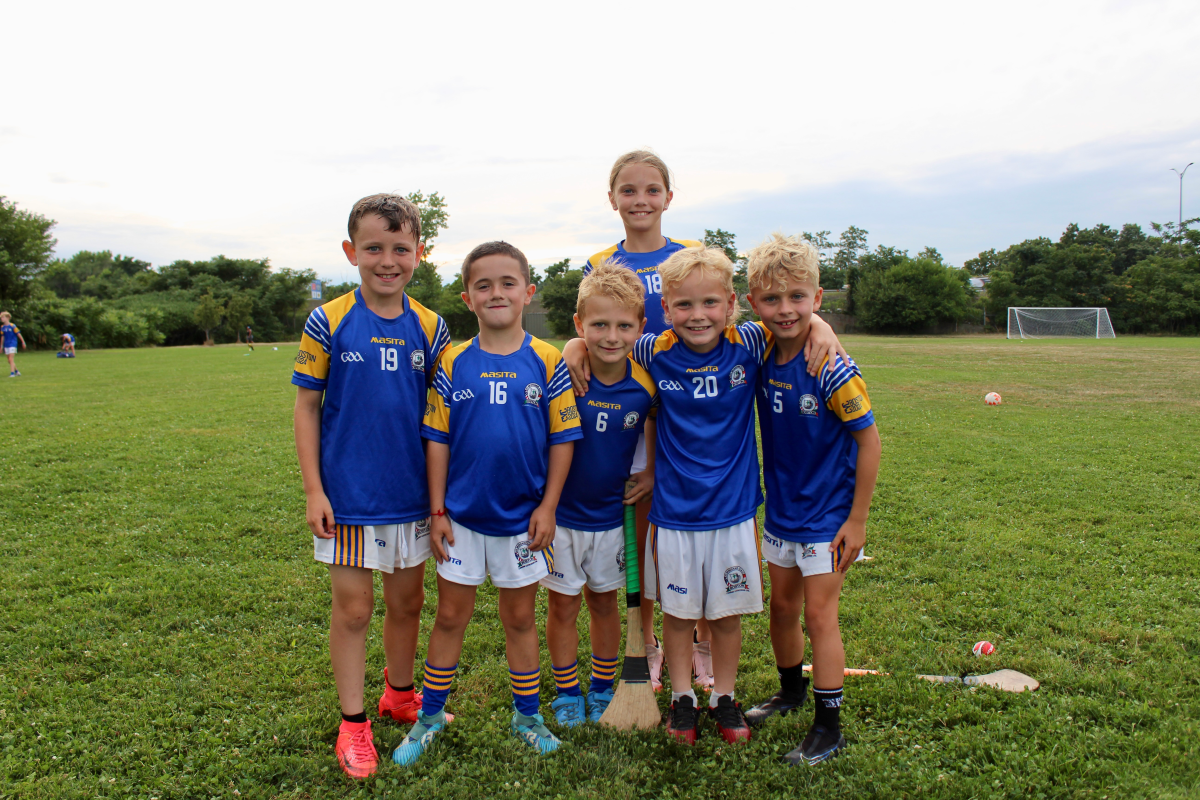
U10 and U8 athletes were full of smiles even after an hour-and-a-half of practice under the hot July sun.


